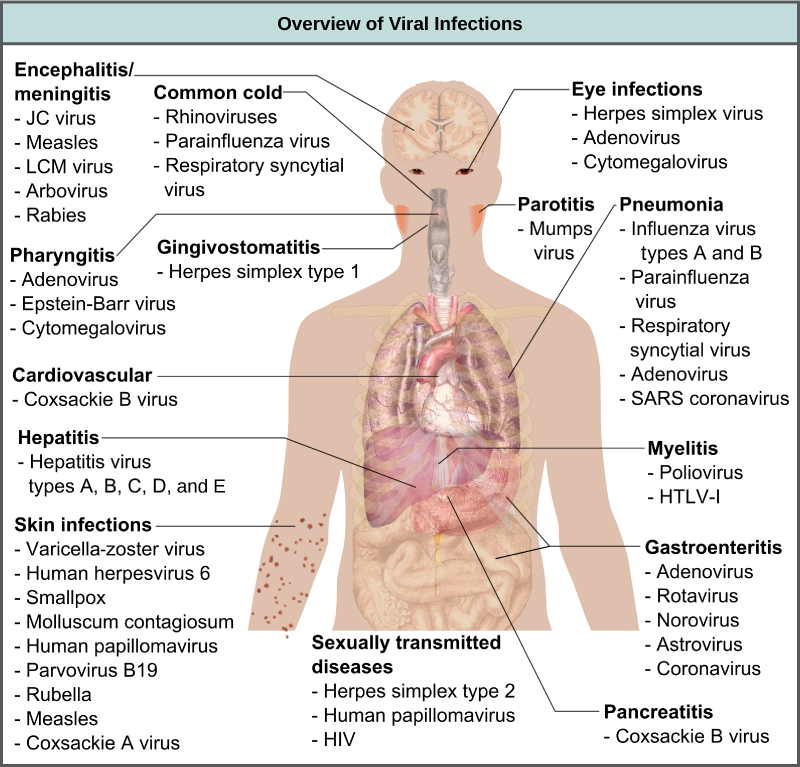| << Chapter < Page | Chapter >> Page > |
The replication mechanism depends on the viral genome (DNA or RNA). DNA viruses usually use host cell proteins and enzymes to make additional DNA that is then used to copy the genome or be transcribed to messenger RNA (mRNA). The mRNA is then used in protein synthesis. RNA viruses, such as the influenza virus, usually use the RNA as a template for synthesis of viral genomic RNA and mRNA. The viral mRNA is translated into viral enzymes and capsid proteins to assemble new virions ( [link] ).
The last stage of viral replication is the release of the new virions into the host organism, where they are able to infect adjacent cells and repeat the replication cycle. Some viruses are released when the host cell dies and other viruses can leave infected cells by budding through the membrane without directly killing the cell.

Cell death may be immediate or delayed after attachment and penetration by the virus. For example, bacteriophages, viruses that infect bacteria, may or may not kill their host immediately. There are two viral replication strategies; when the virus kills the host cell it is called the
lytic cycle , and when the virus does not kill the host but replicates when the host replicates it is called the
lysogenic cycle (
[link] ).

So why haven't all the bacteria in the world been destroy by bacteriophages? The answer is natural selection of defense mechanisms by bacteria. Mutations of bacterial surface proteins that are not recognized by a particular phage allow the bacteria to survive by preventing attachment. Without going into detail, bacteria have internal defenses that allow them to cut up viral DNA before it can infect the cell. Then one might ask, why hasn't all the bacteriophages in the world gone extinct by not being able to reproduce. Once again, the answer is natural selection. Viruses mutate to bypass the defense mechanisms of the bacteria. This illustrates that the parasite-host relationship is in a constant evolutionary duel.Similar co-evolutionary strategies characterize the interactions of viruses and animals, or viruses and plants.
Viruses cause a variety of diseases in animals, including humans, ranging from the common cold to potentially fatal illnesses like meningitis ( [link] ). These diseases can be treated by antiviral drugs or by vaccines, but some viruses, such as HIV, are capable of avoiding the immune response and mutating so as to become resistant to antiviral drugs.


Notification Switch
Would you like to follow the 'Principles of biology' conversation and receive update notifications?